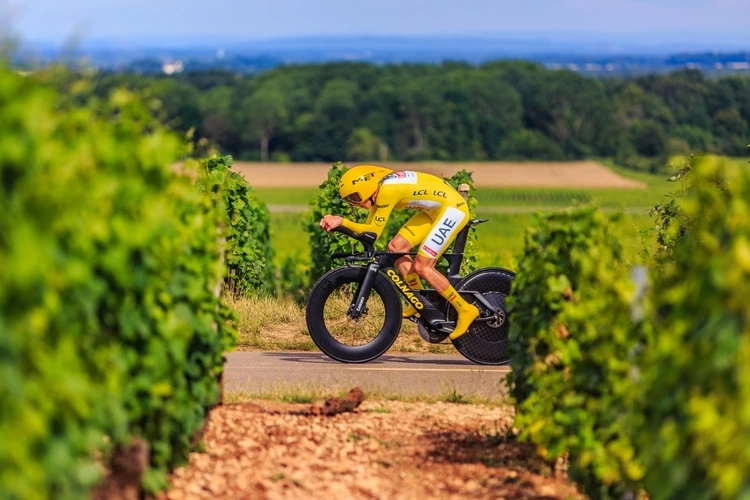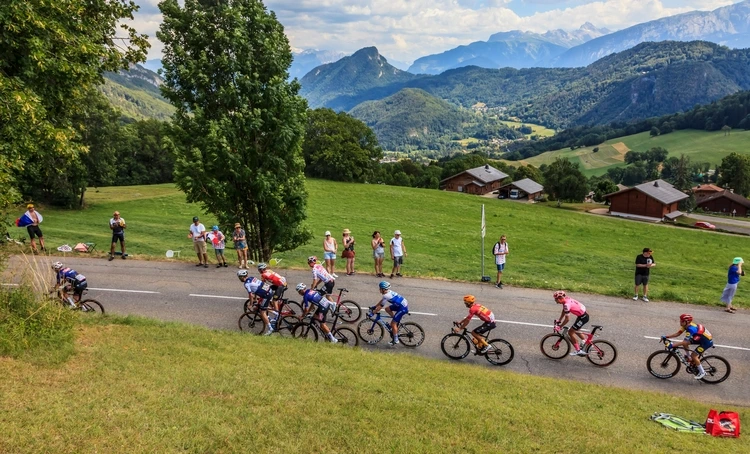
From carbon audits to initiatives encouraging children to bike, Tour de France makes big strides to reduce its environmental impact
By
3,320 kilometres. That’s the distance that this year’s Tour de France competitors will be covering in the highly-anticipated race. While spectators’ attention may be turned toward the various athletes, one important factor that the race relies just as heavily is that of the environment.
Enjoying this article? Check out our related reads:
In the next several weeks, cyclists will traverse through terrain from mountains in the Pyrenees to flats in Normandy, all in the hopes of being crowned the winner. These environments, unsurprisingly, require sustainable practices in order to continue to flourish long after the 23-day-long tournament is over.
Here we look toward some of the positive steps being taken to protect the environments Tour de France is held in…
Carbon audit
In its most recent carbon audit – back in 2021 – the Tour de France produced total emissions of around 216,000 tonnes of CO2 equivalent, a figure including direct emissions from vehicles and operations along with indirect emissions from spectators. This figure is vast, equivalent to that from more than 50,000 cars driven for an entire year.

Having said this, the Tour de France’s environmental impact has lessened from its first carbon audit back in 2013, seeing a 37 per cent reduction in direct emissions.
To mitigate the emissions still occurring, the Tour deploys an ‘avoid–reduce–offset’ strategy. When offsetting is required, it is through France’s ‘Label Bas Carbone’ programme, which focuses on reforestation and sustainable forest management in regions along the race route.
Actions to reduce emissions takes many forms, from transitioning the official vehicle fleet of the race into hybrid and bio-fuel powered trucks, optimising routes to ensure minimal travel between them, as well as promoting sustainable transport options for spectators including special fares on regional trains and the promotion of carpooling.
‘Riding Into the Future’ programme
Every year, Tour de France runs a programme known as ‘Riding Into the Future’. Under this umbrella, three initiatives take place: the ‘Cycle City of the Tour de France’, the ‘Little Riders’ scheme and ‘A Bicycle For All’– all with the goal of equipping thousands of individuals to learn how to ride a bike, and thus the ability to choose a more sustainable mode of transport.
The ‘Cycle City of the Tour de France’ initiative changes location each year, and has so far been labelled to 155 towns and cities in France and abroad. This initiative seeks to support local authorities in developing more robust and widespread cycling infrastructure in their areas.
As well as this, there is the education programme known as ‘Little Riders’. In total each year, around 30,000 children aged 6 to 12 are introduced to the world of cycling through the initiative. Since its opening, 10,000 bikes and balance bikes have been donated.
Back in 2024, 1,000 balance bikes were donated to nurseries across France in the stopover towns of the tournament, teaching younger generations how to ride. Additionally, workshops on learning how to ride are bike are held in several stopover towns each year under the initiative.
Finally, the ‘A Bicycle for All’ programme – supported by the Ministry of Support and the Olympic and Paralympic Games – offers cycling classes to school pupils throughout France.
Waste from spectators
Around 12 million spectators line the routes of the Tour de France every year. Unsurprisingly, such large crowds produce large volumes of waste, requiring organisers to deploy widespread waste management operations.
One major source of waste in Tour de France is the Tour’s publicity caravan, which distributes around 15 million promotional items – from water bottles and wristbands to plastic rain ponchos and key rings – every year. Many of these are made of plastic and are discarded at various points along the route by spectators.
In previous years, some companies have come under fire for their excessive promotional items, including Cochonous which gave away around seven tonnes of plastic-wrapped mini sausages and more than 100,000 sun hats back in 2017.
To solve such issues, three key methods of waste management are utilised. Firstly, organisers distribute around 100,000 sorting bags each year to aid local authorities in recycling processes. Public awareness campaigns are also present during the tournament, encouraging spectators to appropriately dispose of their litter. As well as this, designated ‘waste collection zones‘ are marked out across all routes.
Recycled and recyclable materials for cups and tumblers have also been implemented recently to minimise plastic waste.



